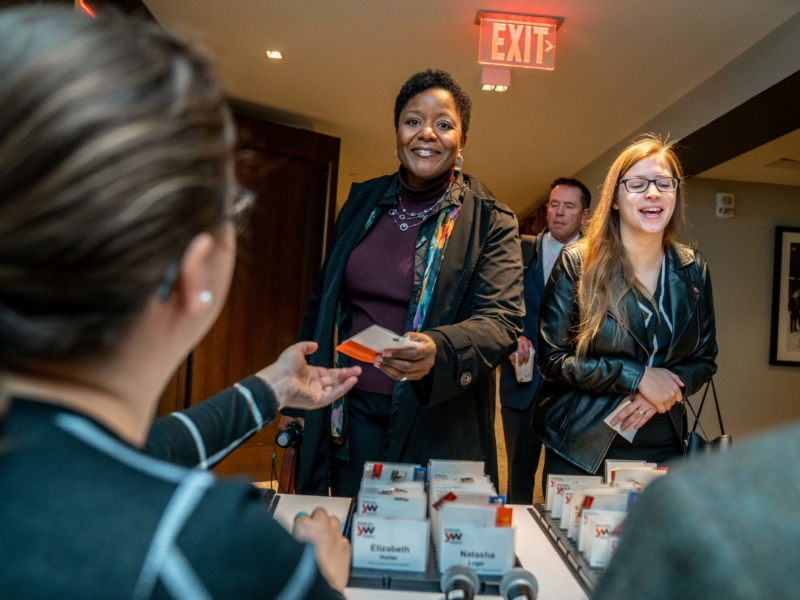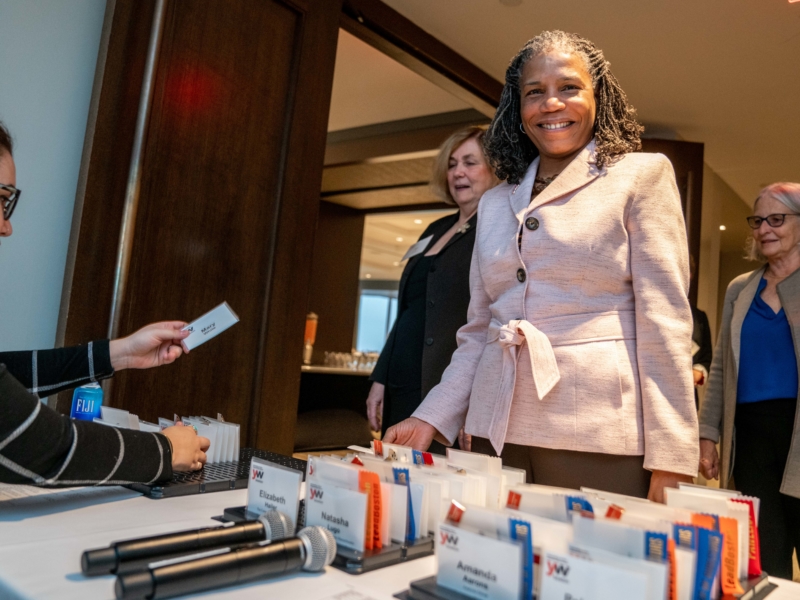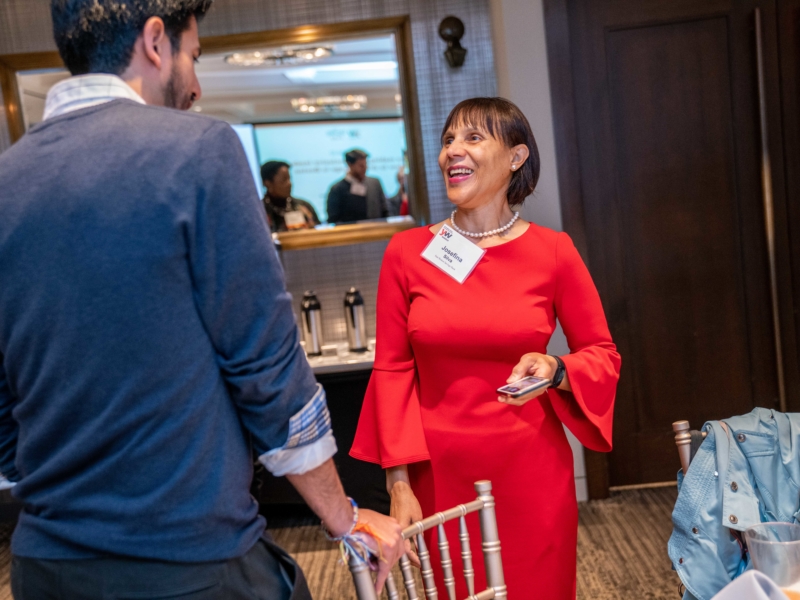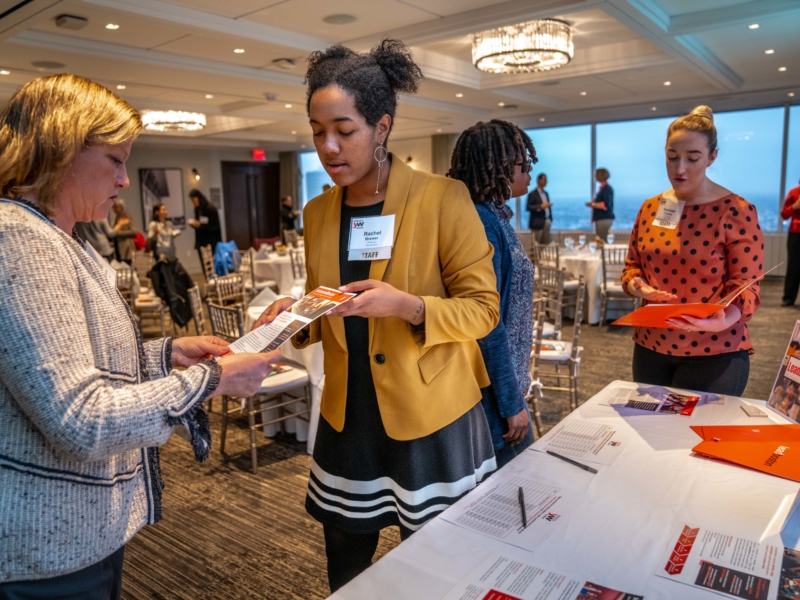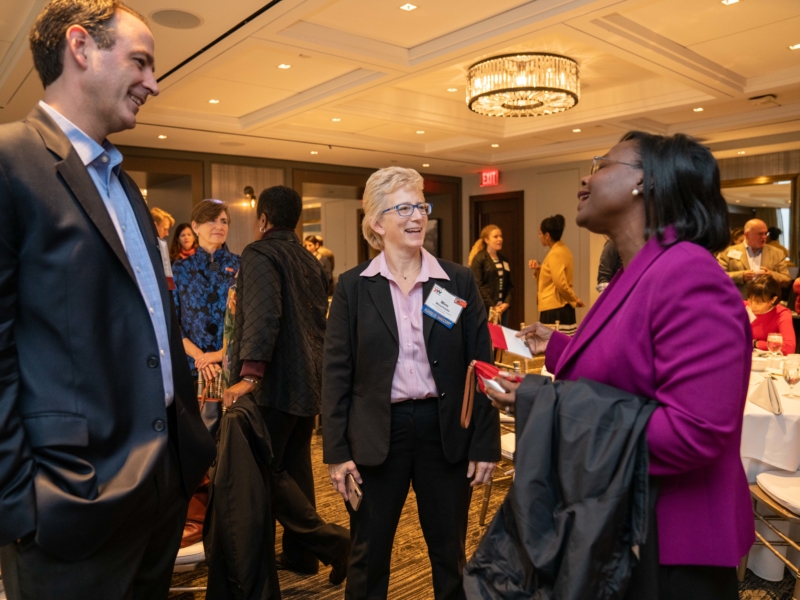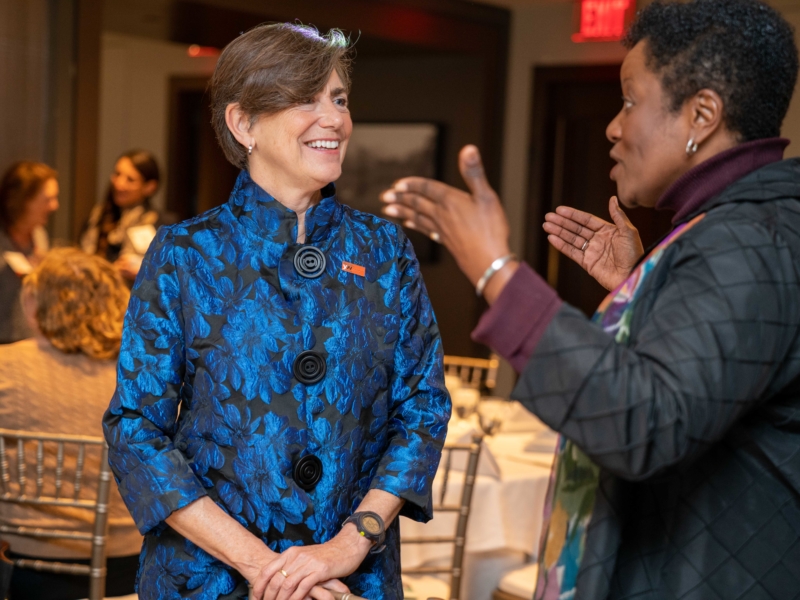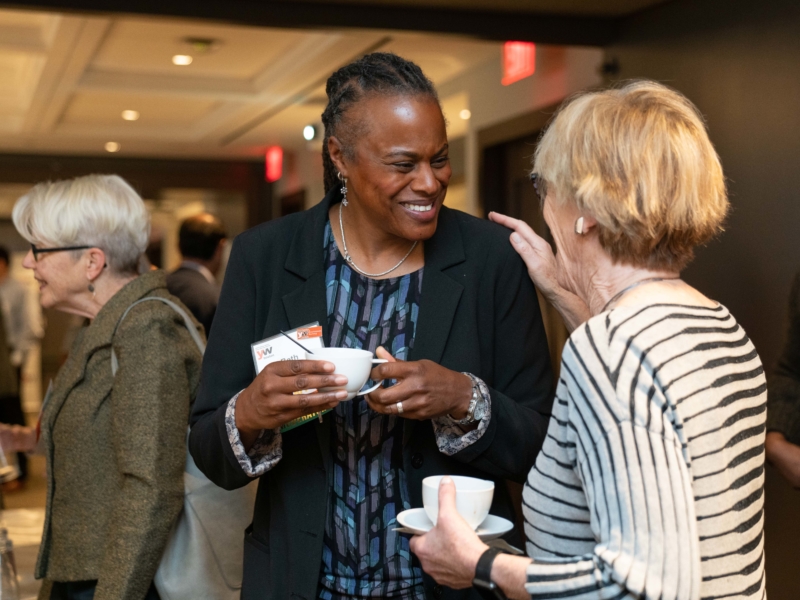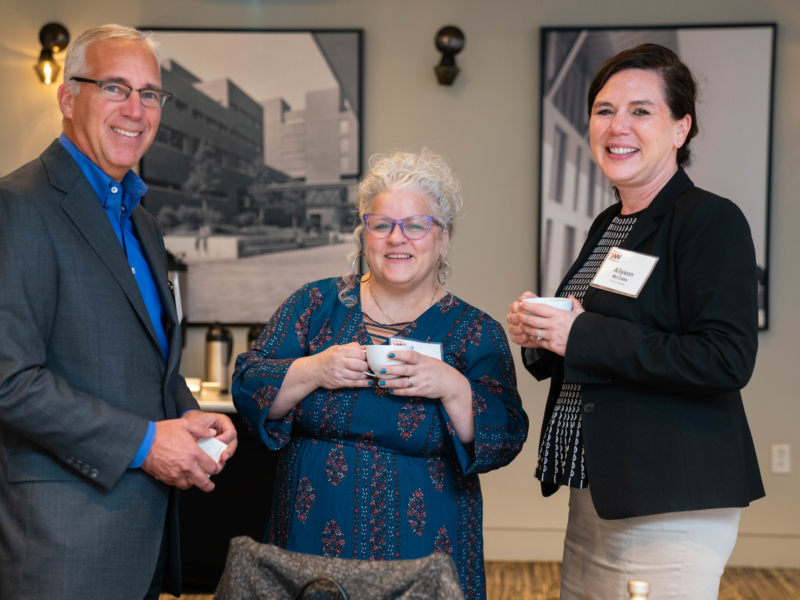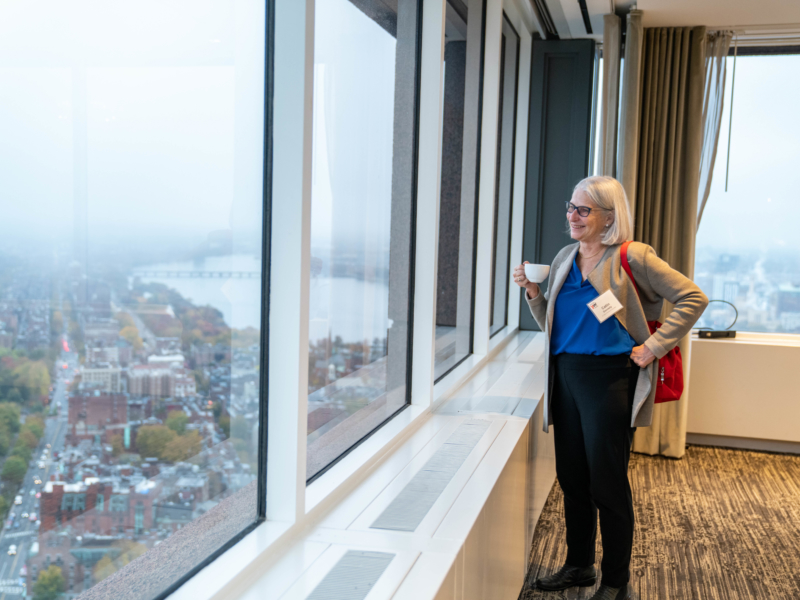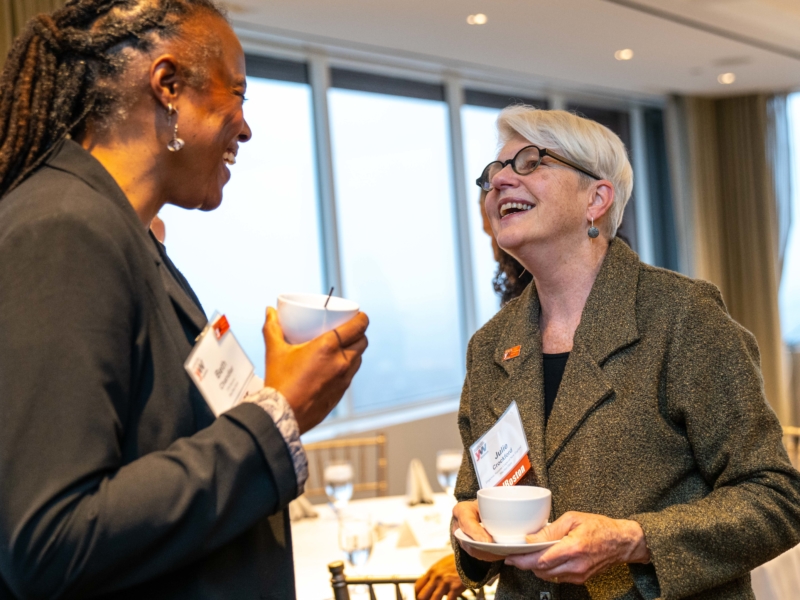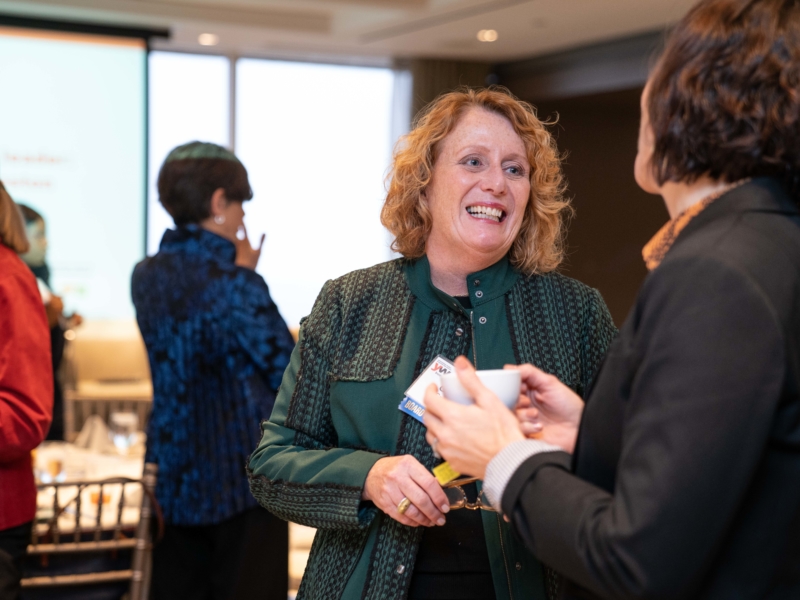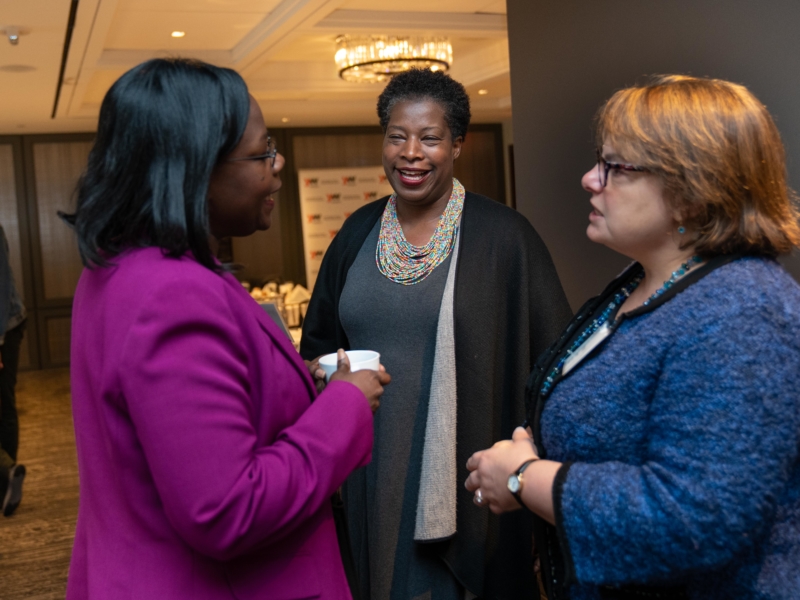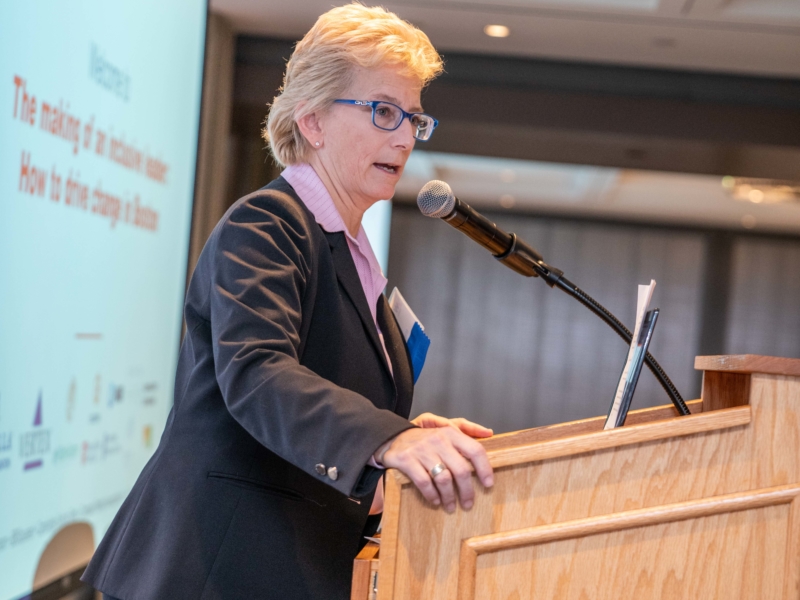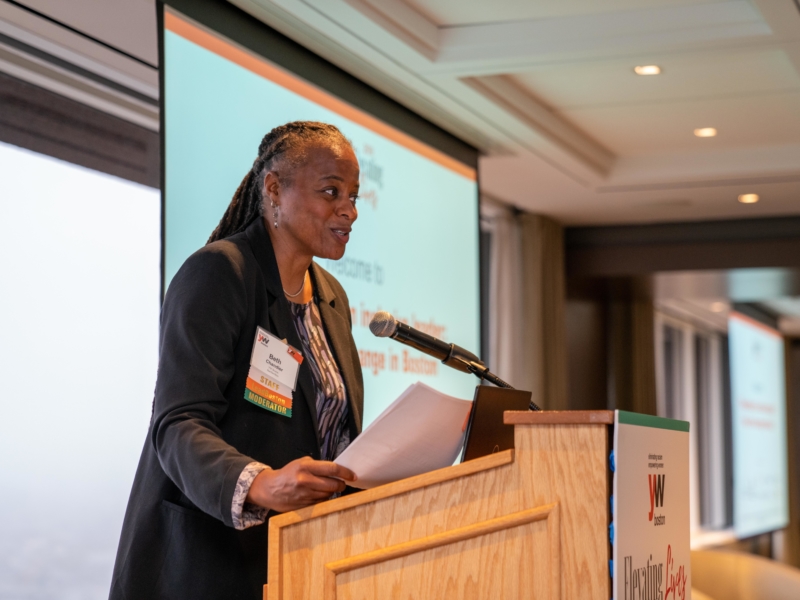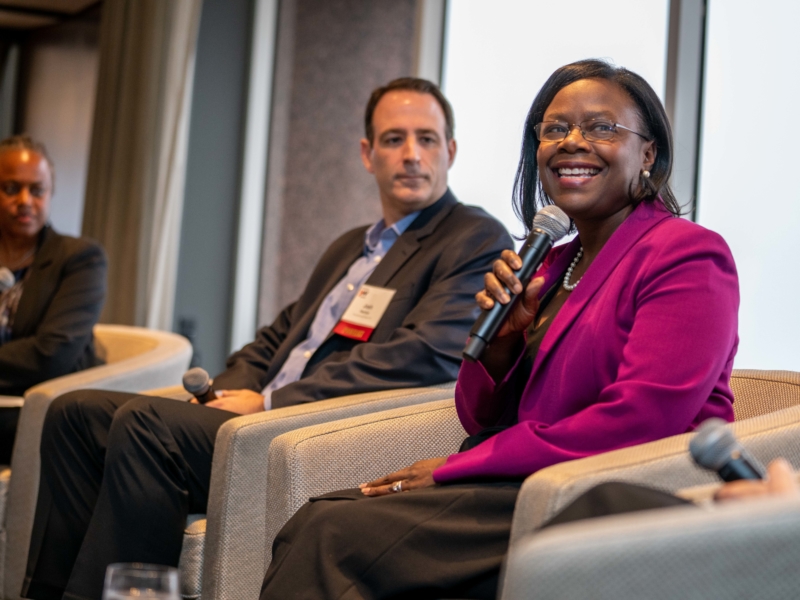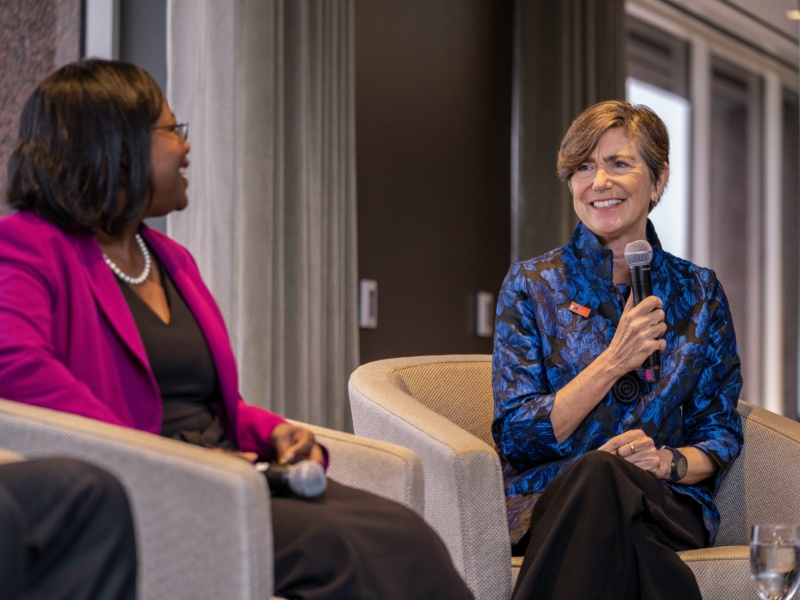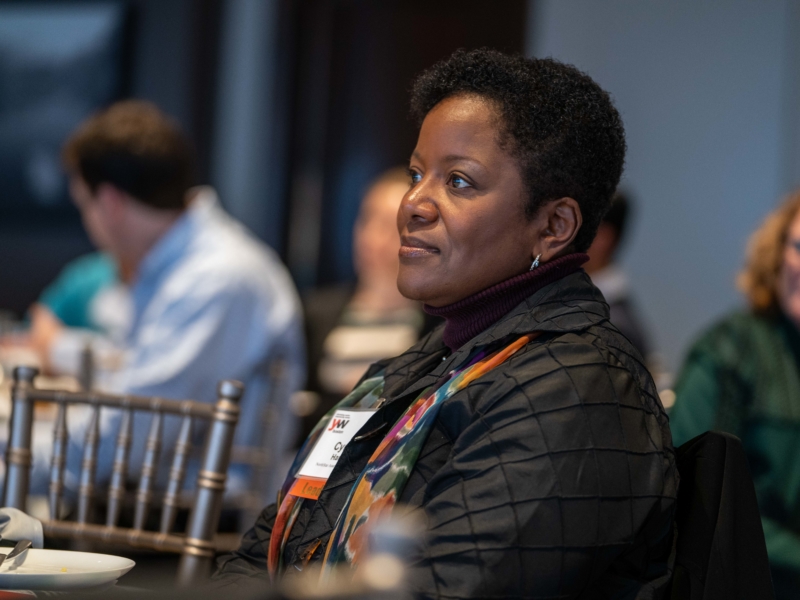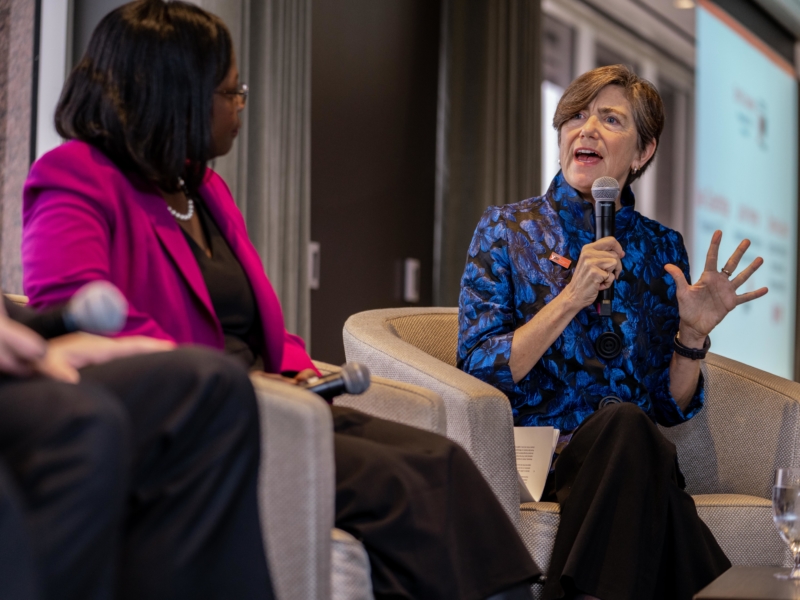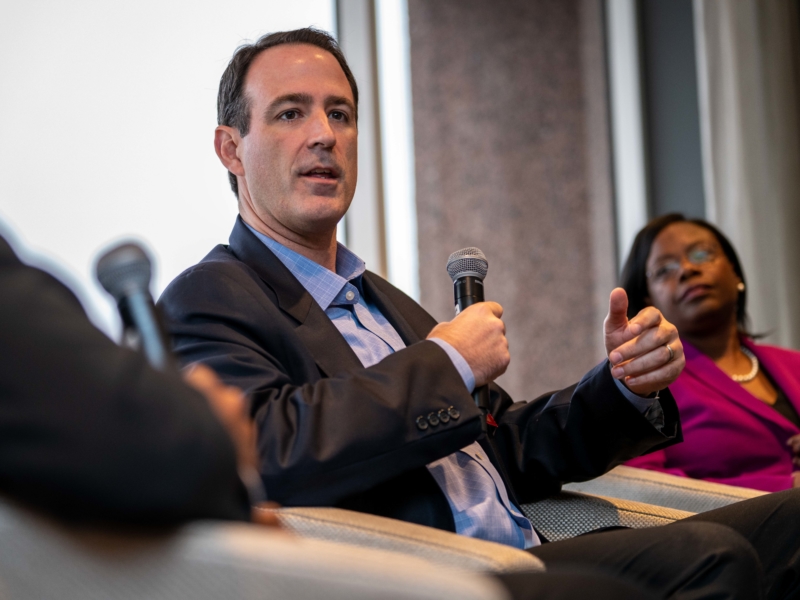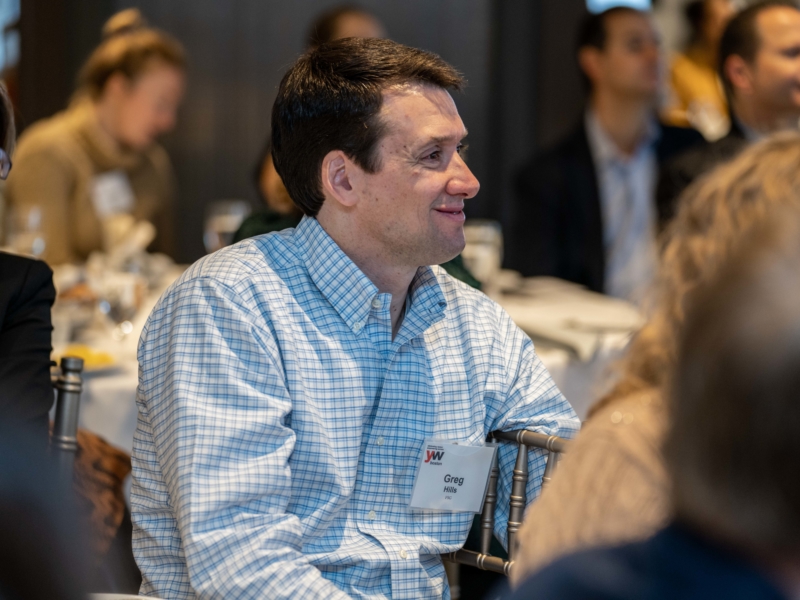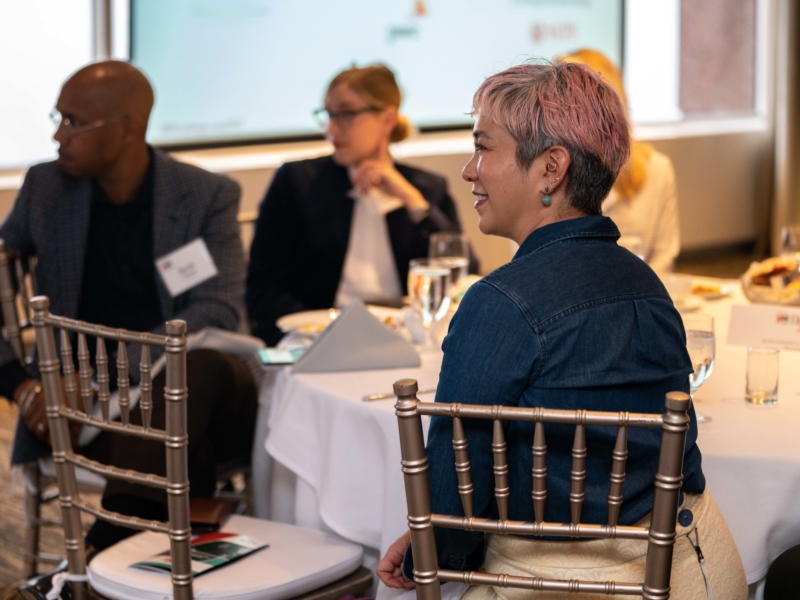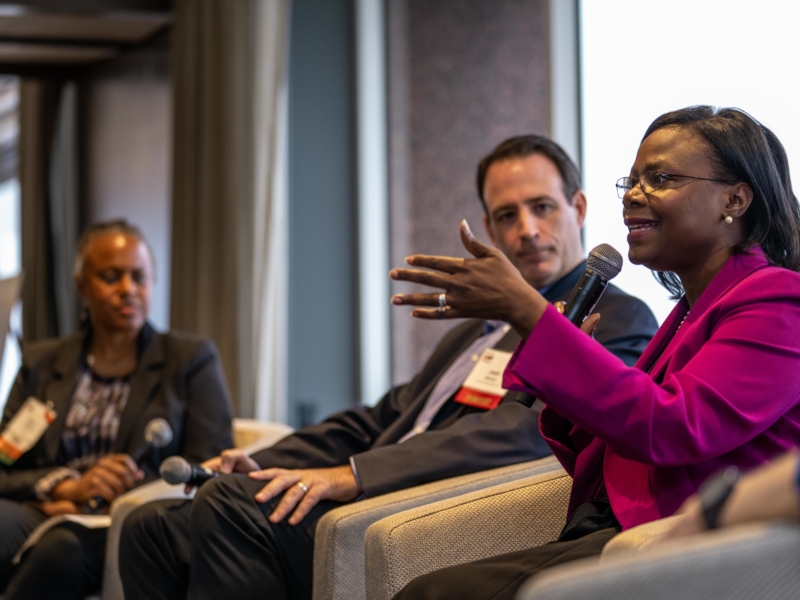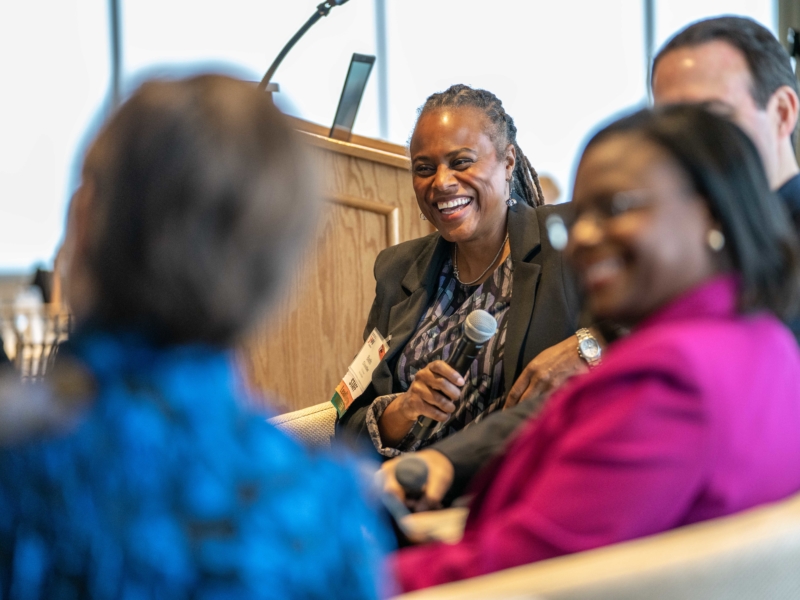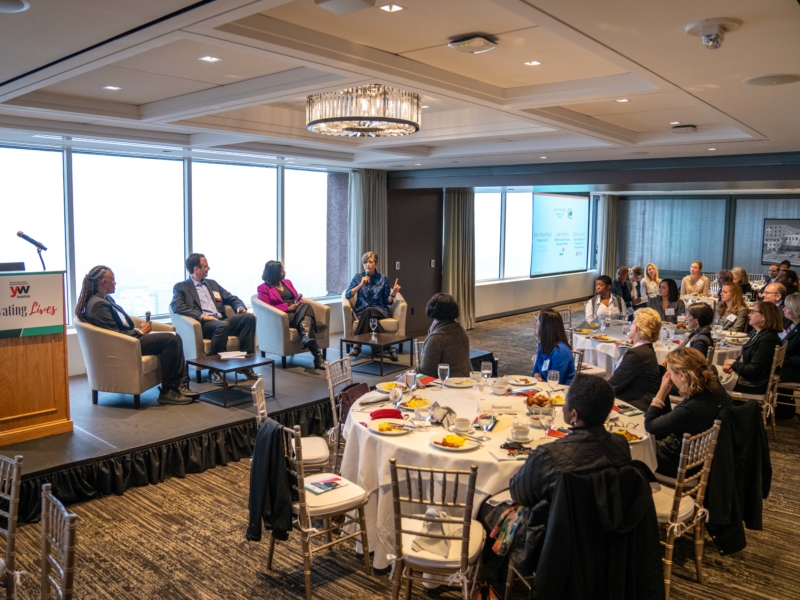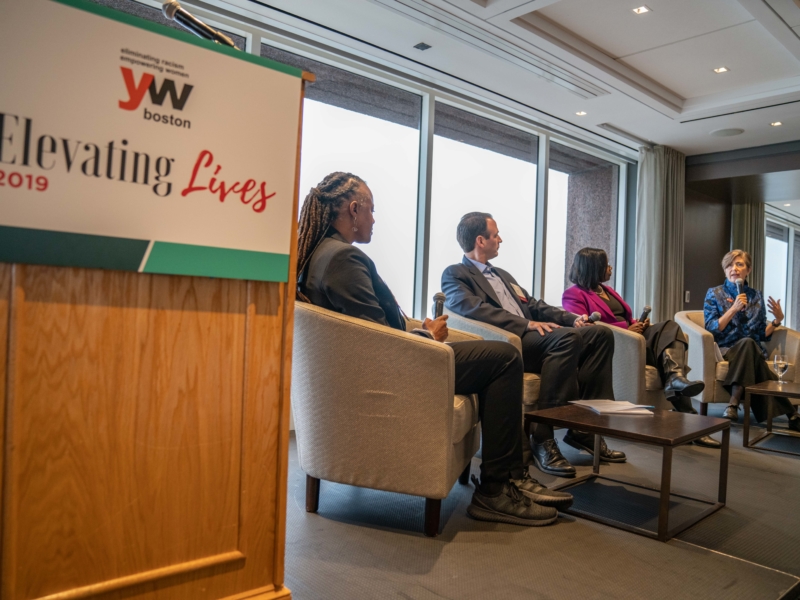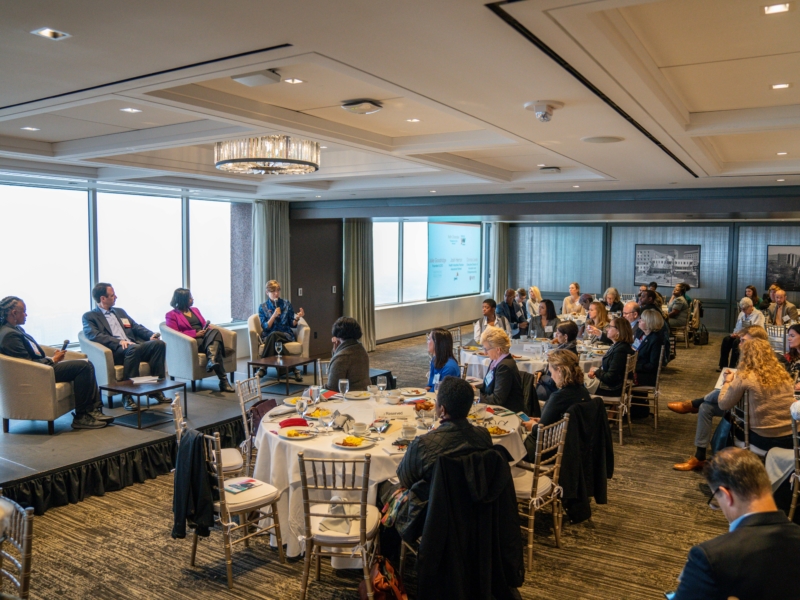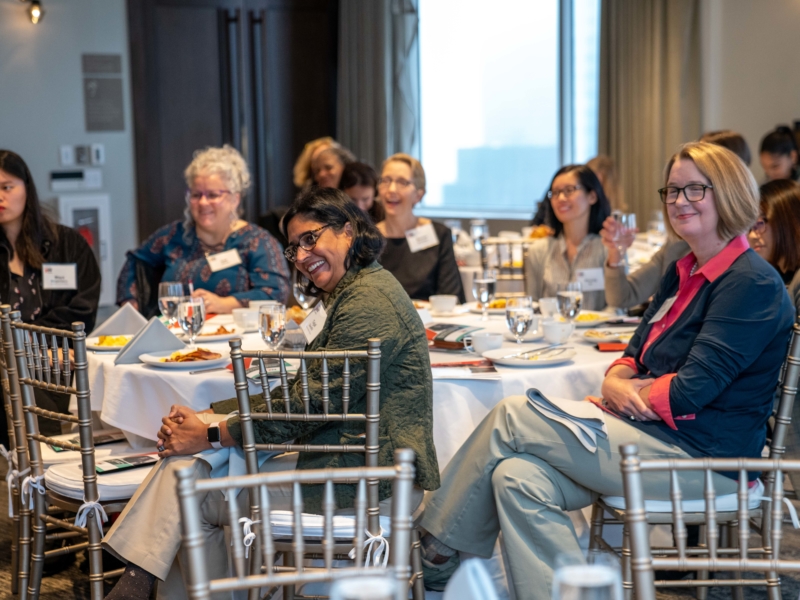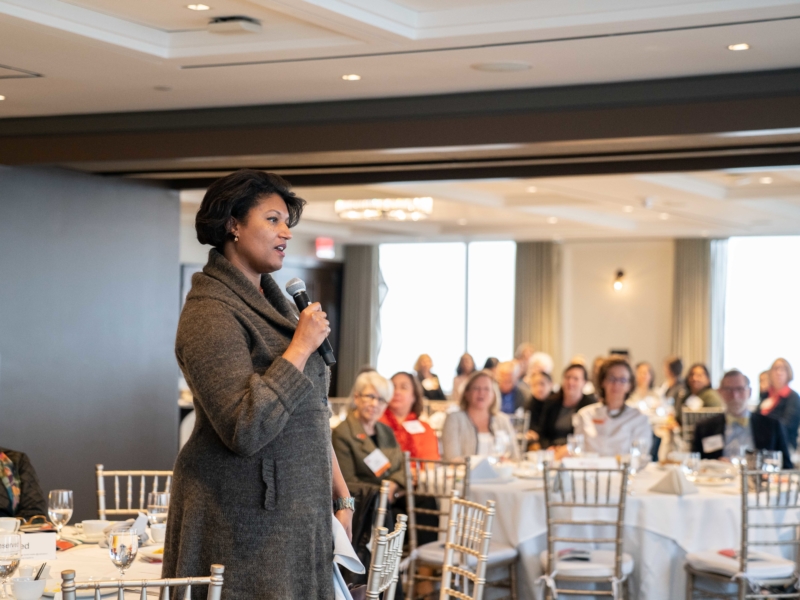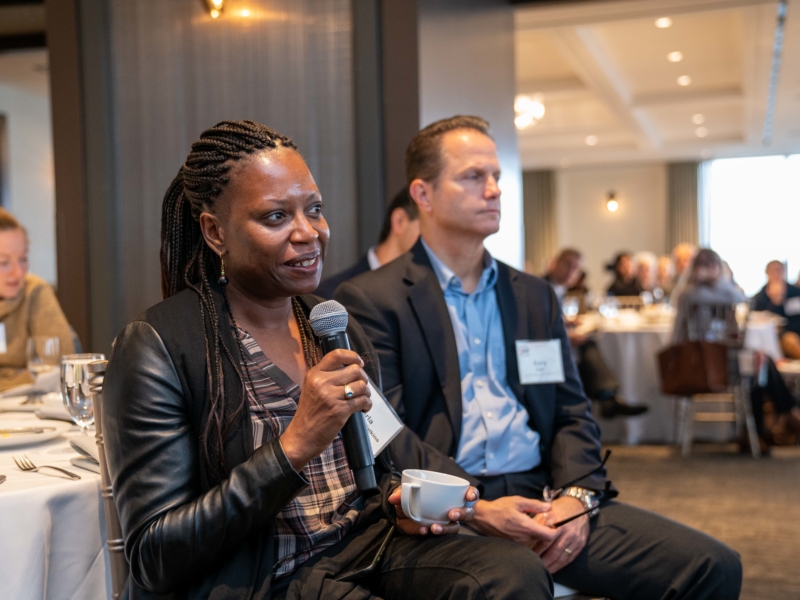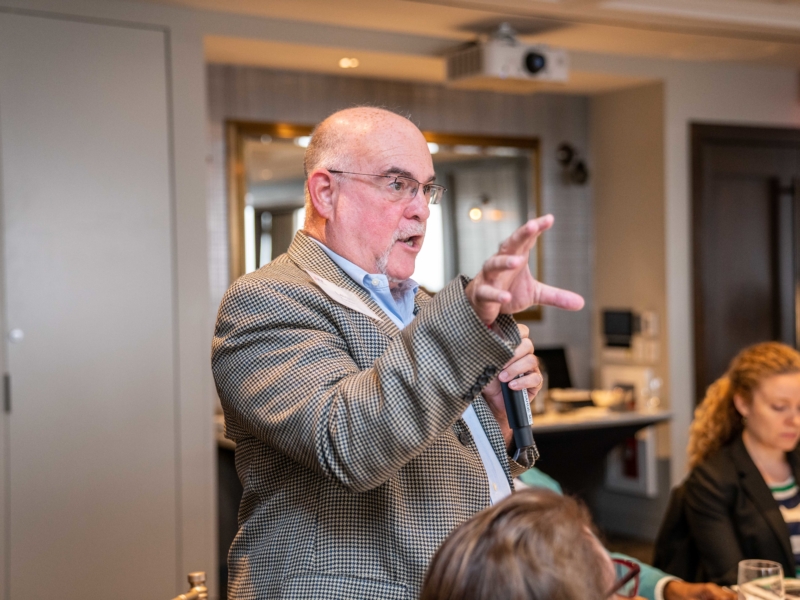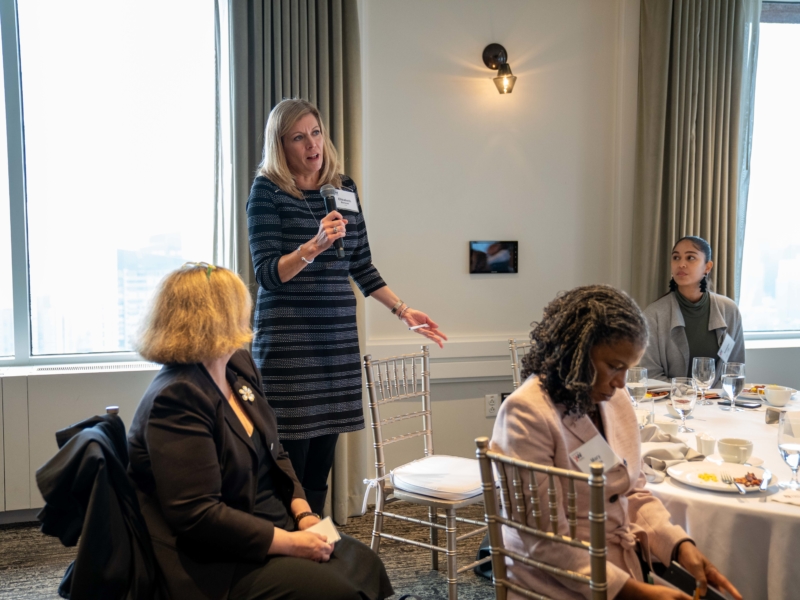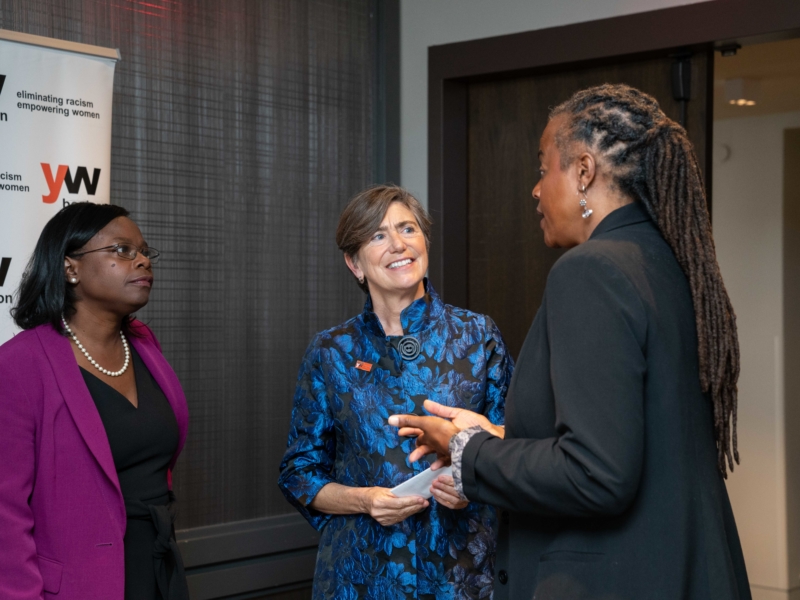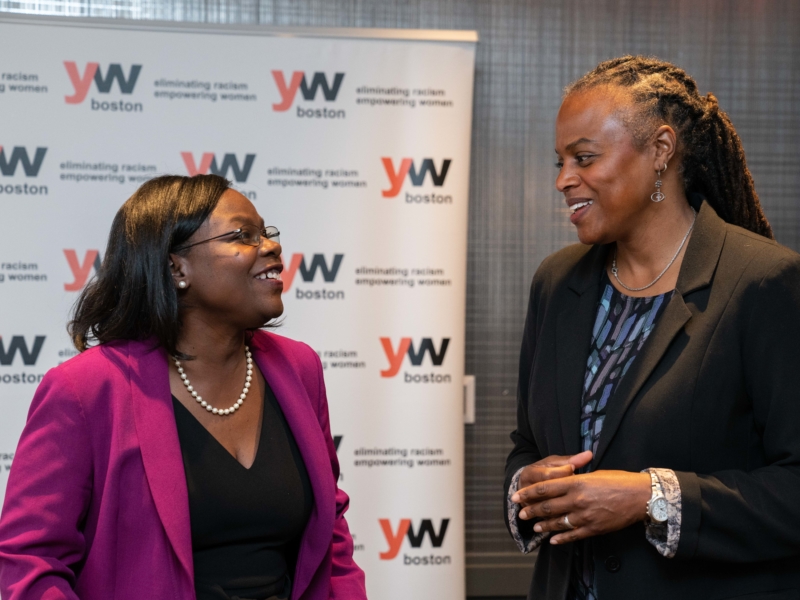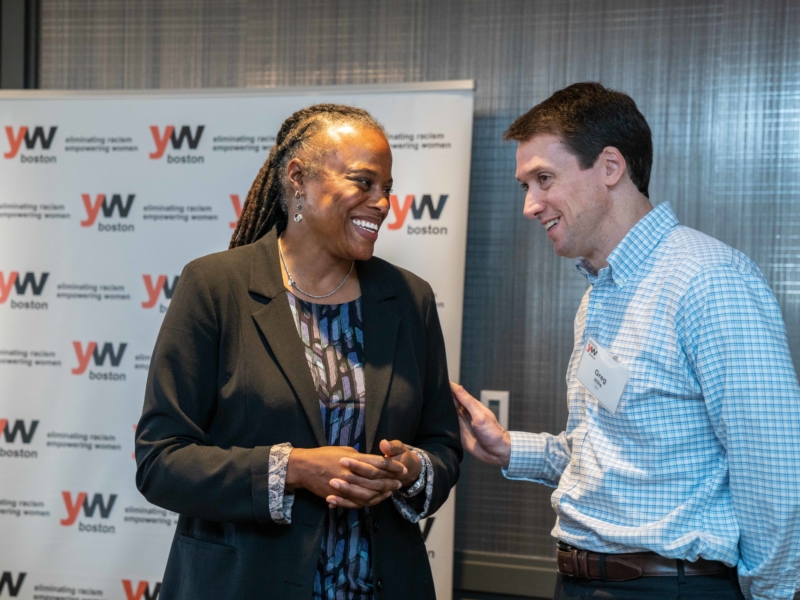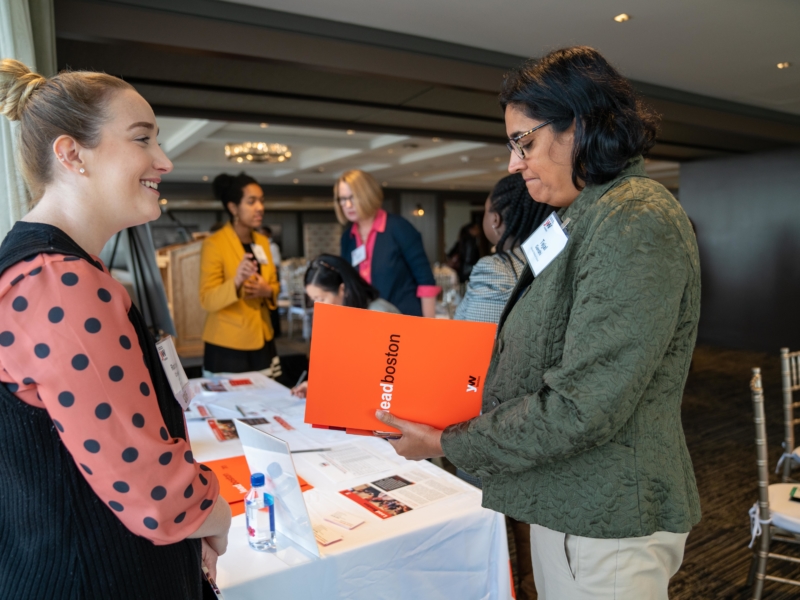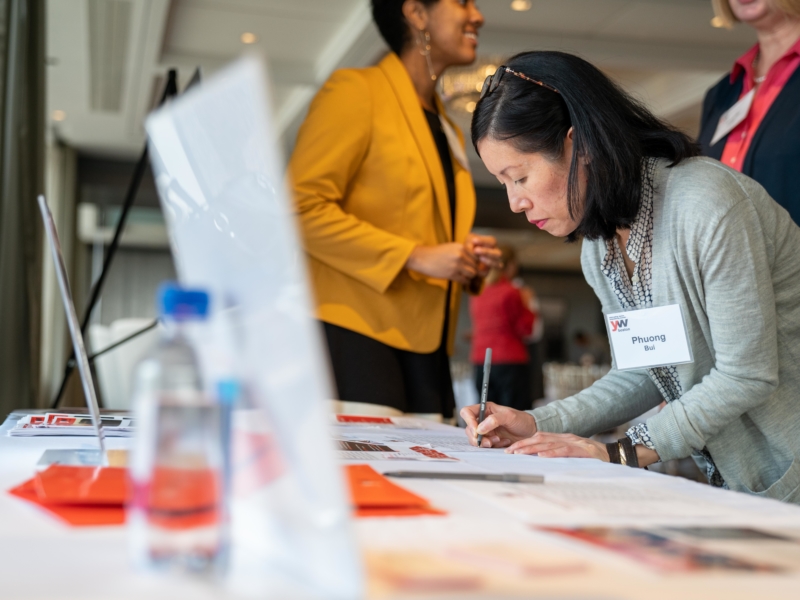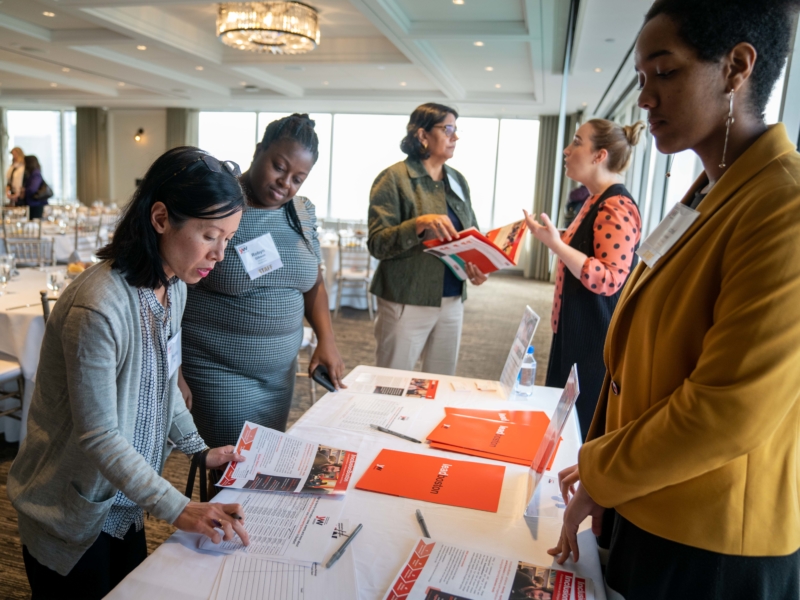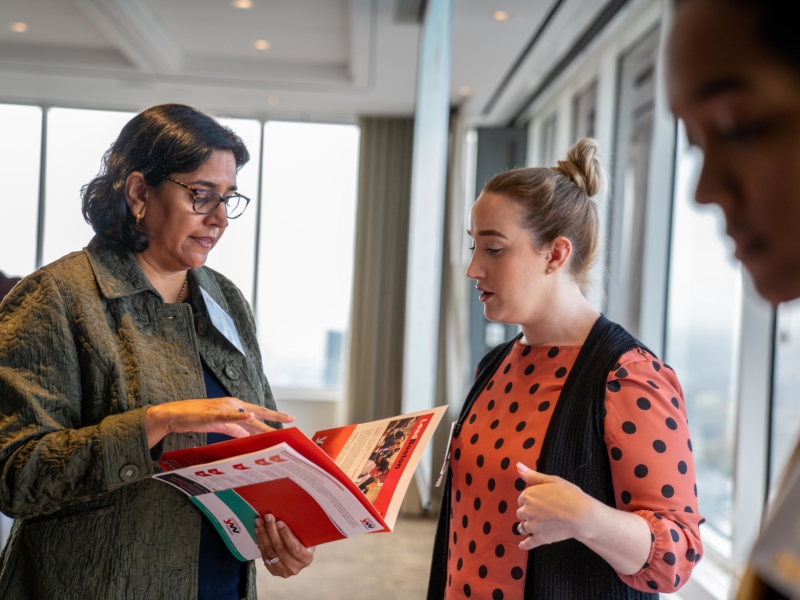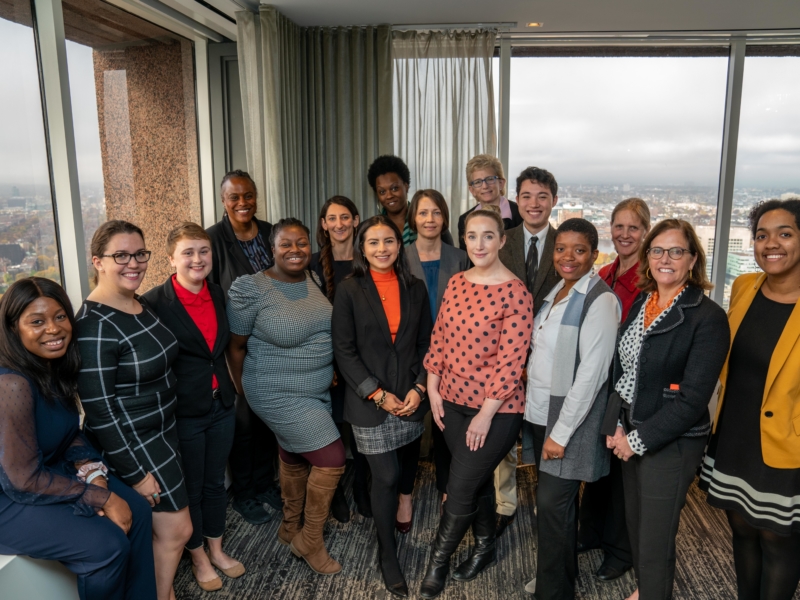Our top five takeaways on becoming a more inclusive leader
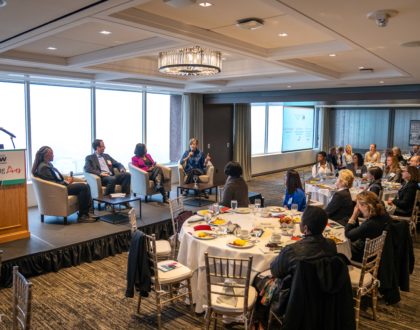
On October 30, YW Boston hosted “The making of an inclusive leader” at the University of Massachusetts Club in Boston. The panel discussion was the first Elevating Lives event of 2019, a fall event series which focuses on barriers and solutions to build a more equitable Boston. The event brought together over one hundred attendees to learn from the panel on how to be an inclusive leader, leverage diverse points of view, and drive lasting change in Boston.
Beth Chandler, President and CEO of YW Boston, moderated the panel, including:
- Julie Goodridge, Founder & CEO, NorthStar Asset Management, Inc.
- Josh Herron, Health Industries Practice Assurance Partner, PwC
- Donna Levin, Executive Director of Innovation and Entrepreneurship, WPI and Co-founder, Care.com
If you were unable to attend our first event, save your seat for our second conversation between Beth Chandler and Dr. Robert W. Livingston, Lecturer of Public Policy at the John F. Kennedy School of Government at Harvard University. This fireside chat, Thursday, November 21, 8:30-10:30 AM, will explore the topic, “Understanding what you can do to promote racial equity.” Ticket sales close Friday, November 15th.
Photos by Amanda Kowalski. Find more on our Facebook page.
Do not miss our top takeaways from “The making of an inclusive leader”:
1. Inclusive leadership is crucial to building and maintaining diverse teams.
As Beth Chandler welcomed the audience to “The making of an inclusive leader,” she shared Harvard Business Review’s definition of inclusion: “All team members feel they are treated respectfully and fairly, are valued and sense they belong, and are confident and inspired.” As companies increasingly hire diverse talent, it is becoming even more important for leaders to be able to work across difference and create inclusive workplaces for their employees. As Beth shared, “Inclusive leadership directly impacts performance. Teams with inclusive leaders are 17% more likely to report they are high performing, 20% more likely to say they make high quality decisions, and 29% more likely to report behaving collaboratively.”
A number of speakers shared stories that illustrated the importance of building inclusion at work. When the 2008 Financial Crisis began, Julie Goodridge recognized that she had been working to create an inclusive workplace for women, but had not put energy into making it inclusive for women of color. As she put it, “I do not want to be in a situation again where I’m facing a financial crisis and I don’t have a broad range of experience sitting in front of me, because we need to come at a problem from a variety of perspectives.” In order to diversify her team, she also needed to learn how to run a team where women of color wanted to work. As Donna Levin shared, when she first began Care.com, she worked on a diverse team and therefore did not know why she needed to focus on diversity, equity, and inclusion. After realizing that her staff was not as diverse as she believed them to be, she knew that diverse leadership did not equate to inclusion, and her team worked to put inclusion efforts into place.
The stakes for inclusion at your workplace can be high. As Beth shared about her personal experience, “Being in the investment bank environment for a couple of years, I ended up being sick all the time…They ended up diagnosing it as the toxic culture of the environment I was in.” The ramifications for this non-inclusive workplace were not just felt by Beth. At this workplace, it led to high turnover, as Beth stated, “When I joined the bank, in my cohort, there were close to a dozen young people of color, and when I left within three years, there were none left.”
2. First, leaders must unpack their own unconscious biases.
To get the panel conversation started, Beth Chandler asked each of the panelists, “What has been your biggest challenge to being an inclusive leader?” As the panelists spoke about, much of our progress as leaders depends on deconstructing our own beliefs and biases. Both Josh Herron and Donna Levin discussed how experts say humans have unconscious bias.
Josh explained that part of being an inclusive leader means taking time to reflect on how one’s actions may impact others. He stated, “Before taking action, I reflect on my behaviors and my actions, and how I am bringing my full self to a situation.” By adjusting to this inclusive mindset, he asks, “How can I not only change my thoughts and behaviors, but how can I make change?”
As Donna shared, “My own biggest challenge is unpacking my own unconscious bias. I’m sure we’ve heard the data that what is in our basement and how we perceive the world happens by the time that we are five years old.” Therefore, she explained that we must unpack these biases to be able to move through them and make better decisions. Donna spoke about her own apprehension around hiring an employee whose hobbies led her to believe they may be more conservative than the rest of her staff. She feared that a person who held different beliefs from existing staff may polarize the team. However, she was able to interrupt this way of thinking, and realized she was holding her biases about their hobbies against this potential hire. They were the best candidate for the job, so Donna hired them, and they have been a great team player ever since.
3. Diversify your networks, even if it means being uncomfortable or breaking the rules.
Each of the three panelists spoke about how diversifying one’s network is key in expanding your point of view and creating more diverse teams. As Julie Goodridge explains, she makes a point of specifically hiring women of color, and has found that “My employees have been a great source of referrals and are in networks that are different than mine. You have to broaden your entire world, personal and professional. You have to put yourself out there and take a leap of faith.” Expanding your network is not always easy or comfortable. Both Josh Herron and Julie stated that, as white people, they had to seek out spaces where they were a racial minority. Josh shared that, “It is eye opening when I go into a room where I am the one person there who is like me. It causes me to listen to other people’s perspectives.”
Expanding your network requires following up with people you meet in these diverse spaces. Josh shared he has met a number of people he would not otherwise know after joining his town’s METCO program, and has found that “it has been a journey to put myself out there, and there are plenty of opportunities to do so. At the end of the day, what is the worst that can happen? You can have a bad cup of coffee, but ok, move on.” Donna Levin shared the sentiment of needing to take a chance and invite new connections to coffee. She reminded the audience that, “silos do exist, but I can tell you as a person of color in Boston, there is a perception that all the women of color know each other. We do not all know each other. When I find someone like me, it is like, ‘This is so exciting.’…As a woman in tech, I do not have that [diverse network].” It requires intentional work to expanded your networks, no matter what
Donna also shared that sometimes diversifying your pool of candidates means breaking (or changing) your organization’s rules. In the past she found her organization was not seeing diverse candidates. So she asked her team, “Can we reach out to them?” She was told that no, they just had to post the job online and see who applied. She replied, “Time out. When I was at MIT, I got calls all the time. People called me and asked, ‘Would you spend time with us at this institution?’ So why was it that Yale and Harvard could break the rules, but we have to hold ourselves accountable and follow the rules, and now we have no diverse candidates?” So, she found, “We had to get comfortable, in some cases, breaking the rules and reaching out to ten people who are those ideal candidates, to let them know a position exists, to get them to apply.”
4. Introduce new people to equity and inclusion work.
No one can create inclusive spaces on their own. One of the most impactful ways to be an inclusive leader is to share your work with others. Josh Herron spoke about how he believes it is important to encourage people like him, white men, to focus on inclusion. He does so by sharing his journey – how it’s important to recognize that leveraging differences brings greater innovation. He is comfortable reaching out to others to gain new perspectives and helps his colleagues learn about how their actions go beyond intention, and how those actions can impact others. He also invites them to inclusive networking events, so they, too, can diversify the people they know.
One audience member shared the fact that as an African American woman, she has found it to be a challenge to convince her business students, especially white men, to care about inclusion. She asked whether the panelists have any advice on how to explain to people of privileged identities why inclusion is crucial. Josh shared from his personal experience that he always begins these conversations by sharing his experiences and his intent: “I find that when I am thoughtful and purposeful about sharing my intent, that opens it up…I would encourage each of us to be purposeful about our intent and share that, and then asking someone else what their perspective may be.”
Donna continued with the question, acknowledging that she, too, has found that some people will not listen to her about inclusion. She recommends, “If they cannot hear the message from you, bring a friend. I find it incredibly helpful to have a male ally who is willing to stand up and talk about why it is important to share that experience that goes over well. I will bring in a white male speaker to help share that message.” She ended by stating, “If you are looking for speakers, I have some for you,” which was a reminder to the audience that we can all work together to get more people interested in inclusion efforts.
5. Encourage and facilitate dialogue amongst your diverse organization.
The panelists kept coming back to one of the most impactful ways to address inclusion in your workplace: increase opportunities for dialogue. In doing so, colleagues will be able to collaborate over their shared interests and celebrate their differences. When Donna Levin’s company decided to build a diversity and inclusion plan, they “created opportunities to have life to life interactions”. For example, “Every year the CEO would force everyone to switch seats and it was a total mix-up. People had conversations with colleagues they never would have otherwise. We [also] had ‘forced fun’ which gave people the opportunity to work on some light-weight activities to give people the chance to build connections.”
Josh Herron spoke about the impact of employee resource groups and how they are a way to foster inclusive workplace experiences for all by not only raising awareness but by embracing a broad range of ideas and abilities. He further spoke about how ERGs may help organizations learn more about the workplace community and help all feel supported and empowered to take action. For example, Josh shared, “I love when people come and ask, ‘What are doing about xyz and how can I help?’” Having a culture that values dialogue will encourage others to lead by their authentic selves.
If you do not know how to begin encouraging open dialogue, invite someone to help. Once the panelists spoke of their support of fostering dialogue in the workplace, Beth Chandler shared more about YW Boston’s work to facilitate these conversations. YW Boston’s InclusionBoston program works with organizations to create data-driven action plans. This all begins with dialogue – having people speak about their identities and how they impact their perspectives at work. With a groundwork that includes five sessions focused on active listening and relationship building, teams can trust one another and work together to build a more inclusive work environment. Learn more here.
Thank you to our panelists, our sponsors, and everyone who attended “The Making of an Inclusive Leader.”
Interested in attending our November 21 conversation featuring YW Boston President and CEO Beth Chandler and Harvard Kennedy School Professor Dr. Robert W. Livingston?
Click here to purchase tickets, find more information about the event, and view sponsorship opportunities.
______
About YW Boston
As the first YWCA in the nation, YW Boston has been at the forefront of advancing equity for over 150 years. Through our DE&I services—InclusionBoston and LeadBoston—as well as our advocacy work and youth programming, we help individuals and organizations change policies, practices, attitudes, and behaviors with a goal of creating more inclusive environments where women, people of color, and especially women of color can succeed.

